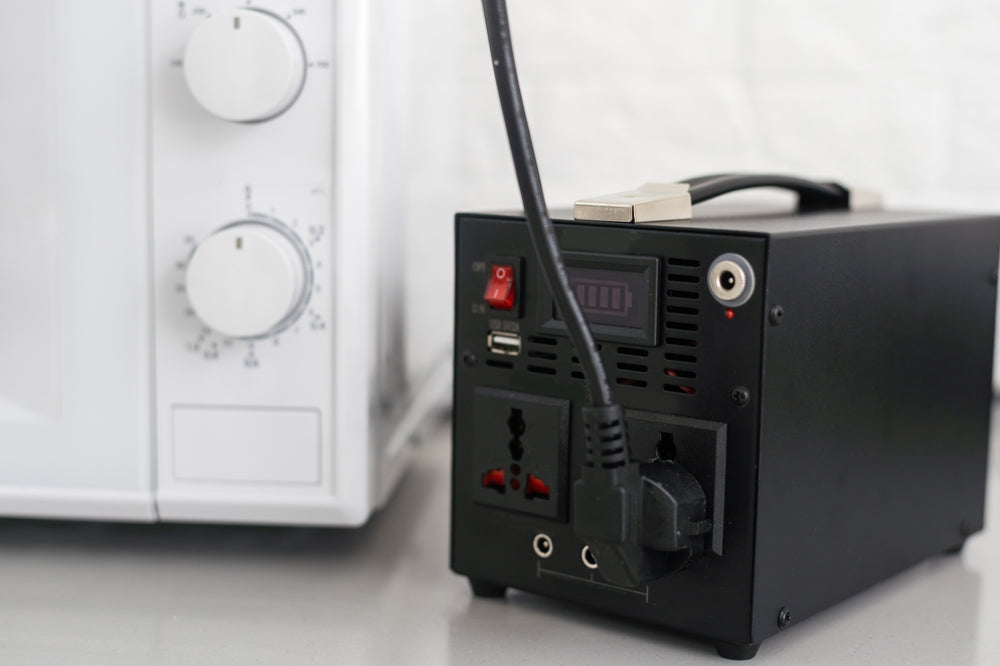
Electricity is a modern necessity, yet power supply isn't always stable. Frequent voltage fluctuations whether sudden spikes or unexpected drops can quietly damage your appliances over time. That’s where voltage stabilizers come in. They're like a protective shield, standing between your valuable appliances and unpredictable electricity.
But how do you know which stabilizer is right for your needs? Let’s walk through the factors to consider, the different types available, and the steps you can take to make a smart, future-proof purchase.
Why Stabilizers Are Essential in Modern Homes
Fluctuations Are More Common Than You Think
Power cuts and voltage changes don’t just happen during storms. In many regions, poor grid infrastructure, overloaded transformers, and inconsistent supply can cause daily fluctuations. These might go unnoticed until one day your refrigerator starts humming strangely or your air conditioner refuses to start.
Even brief voltage imbalances can wear out motors, compressors, and electronic components over time. Rather than wait for something to break, installing a stabilizer can proactively protect your devices and extend their lifespan.
Appliances Are Smarter And More Sensitive
From smart TVs to inverter ACs and advanced washing machines, today’s appliances come packed with sensitive electronics. These systems require steady, regulated voltage to function properly. A stabilizer helps ensure that smart functionality isn’t compromised by poor power quality.
Understand Your Appliance Requirements First
Know What You’re Protecting
Before choosing a stabilizer, make a list of appliances you want to protect. These usually include:
-
Refrigerators
-
Air Conditioners
-
Televisions
-
Microwave ovens
-
Washing machines
-
Water heaters
-
Home theater systems
Each appliance has a different power consumption and voltage tolerance. Your goal is to match the stabilizer’s capacity and range to the appliance’s needs.
Check Appliance Specifications
Most appliances have a label or manual indicating their power consumption (in watts or amps) and recommended voltage range. This information is your starting point for choosing the right stabilizer. Always aim to select a stabilizer with slightly more capacity than your appliance needs this ensures better performance and durability.
Types of Stabilizers and When to Use Them
Individual Appliance Stabilizers
These are designed for one specific appliance. You’ll often see “Refrigerator Stabilizer” or “AC Stabilizer” labeled on boxes. These are optimized for the startup current and voltage tolerance of that specific device.
They’re cost-effective and ideal if you're looking to protect just one or two high-value items.
Mainline Stabilizers
Mainline stabilizers protect your entire home by being installed at the point where electricity enters the house. These are useful in areas with chronic voltage issues or in large homes with multiple high-end appliances.
However, they are more expensive and must be sized appropriately based on your home’s total power consumption.
Digital and Servo-Controlled Stabilizers
-
Digital stabilizers offer real-time monitoring and fast response, suitable for most home electronics.
-
Servo-controlled stabilizers provide precise voltage regulation and are ideal for appliances with motors or compressors, such as ACs and refrigerators.
Key Features to Look For
Voltage Range and Correction Speed
Choose a stabilizer with a wide input voltage range, especially if you live in an area where supply can drop below 160V or spike above 280V. The broader the range, the better the protection.
Also, check the response time how fast the stabilizer reacts to voltage changes. Faster correction minimizes damage and keeps your appliances running smoothly.
Time Delay Function
Some stabilizers include a time delay system, which is especially helpful for devices like refrigerators and air conditioners. This delay gives the compressor time to stabilize before restarting after a power cut, preventing damage from short cycling.
Overload and Short-Circuit Protection
Good stabilizers also protect against current overloads and short circuits. This extra layer of protection ensures that your appliance isn’t harmed if something goes wrong within the stabilizer itself.
Sizing the Stabilizer Correctly
Understand Load Ratings
Stabilizers are rated in kVA (kilovolt-amps) or Amps. Always choose a stabilizer that can handle 20-25% more load than the appliance’s maximum consumption. This margin protects against startup surges and provides breathing room for the stabilizer to function efficiently.
Example:
If your refrigerator consumes 1.2 Amps, choose a stabilizer rated for at least 1.5 Amps.
Don’t Undersize to Save Money
Using an undersized stabilizer will only shorten its life and reduce its effectiveness. It might even overheat and shut down, leaving your appliance exposed. Think long-term—it’s worth spending a little more now to avoid costly repairs or replacements later.
Matching Stabilizers to Specific Appliances
Refrigerators
Refrigerator compressors need surge protection and time delay functionality. Choose a stabilizer with a low start-up voltage and good overload handling. Look for models designed specifically for refrigerators with an input range around 130V–290V.
Air Conditioners
ACs require stabilizers that can handle both high voltage loads and frequent startups. Go for a stabilizer with wide range support (e.g., 140V–280V), time delay, and thermal overload protection.
TVs and Home Theaters
These devices are sensitive to even small voltage variations. Use a digital stabilizer with surge protection and noise filtering for clear, uninterrupted viewing and audio performance.
Final Thoughts: Make the Smart Choice for Long-Term Peace of Mind
Choosing the right stabilizer might seem technical at first, but it's really about protecting the appliances that make your life easier, more comfortable, and more connected.
Start by understanding your appliances and the power conditions in your area. Then match your stabilizer choice to your needs don’t go by guesswork. With the right stabilizer, you’re not just preventing damage; you’re investing in the safety and longevity of your home.
In a world where electronics keep getting smarter but power supply doesn’t, a stabilizer becomes more than a tool it becomes your home’s electrical insurance policy.








